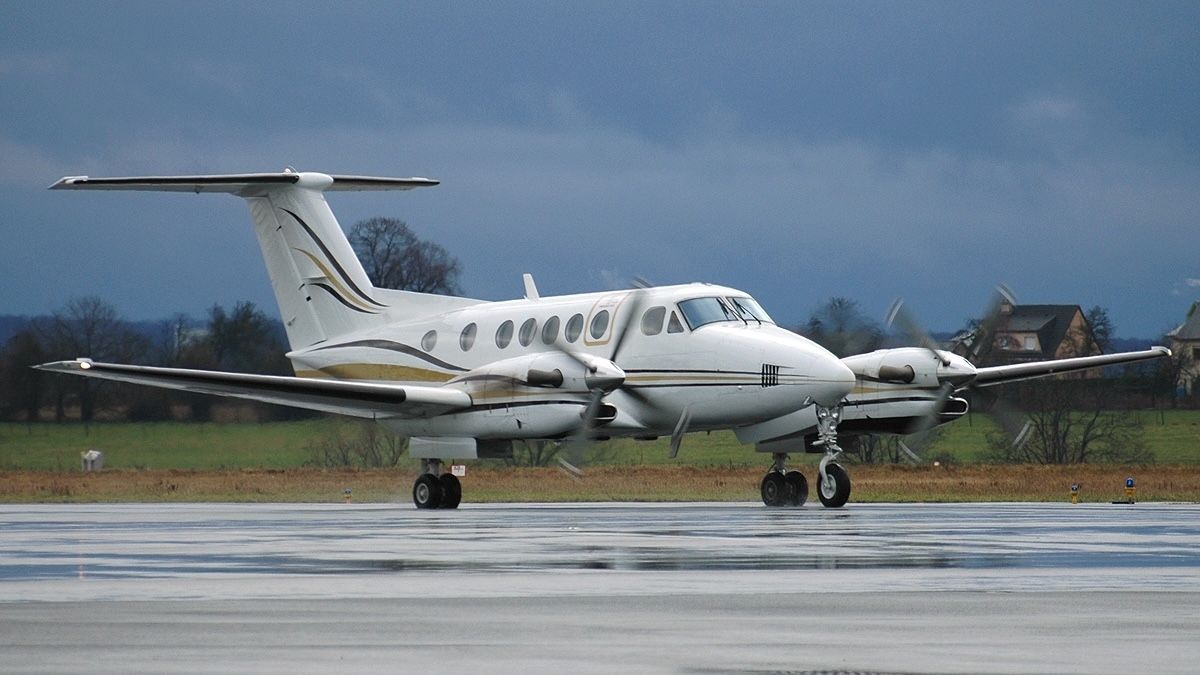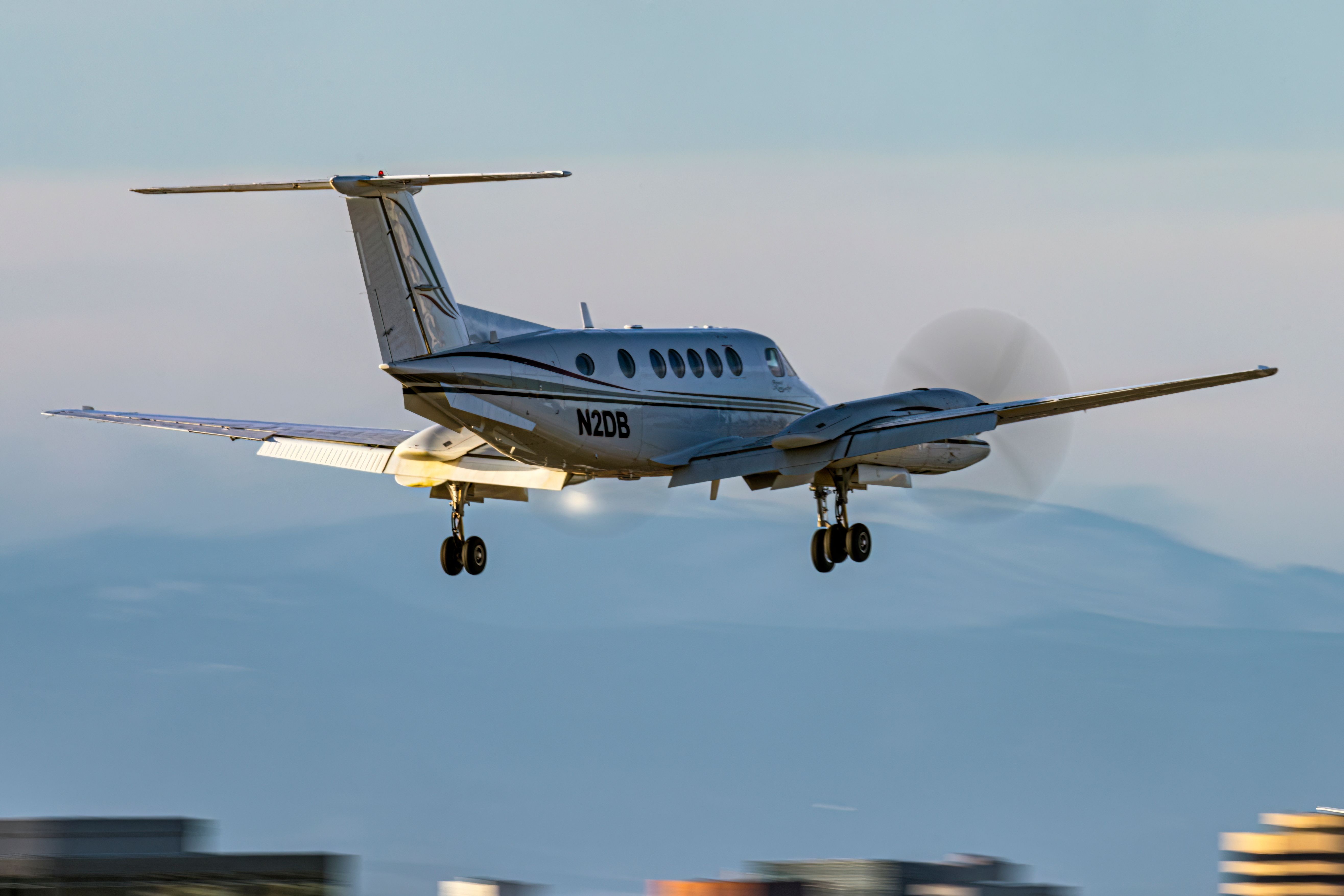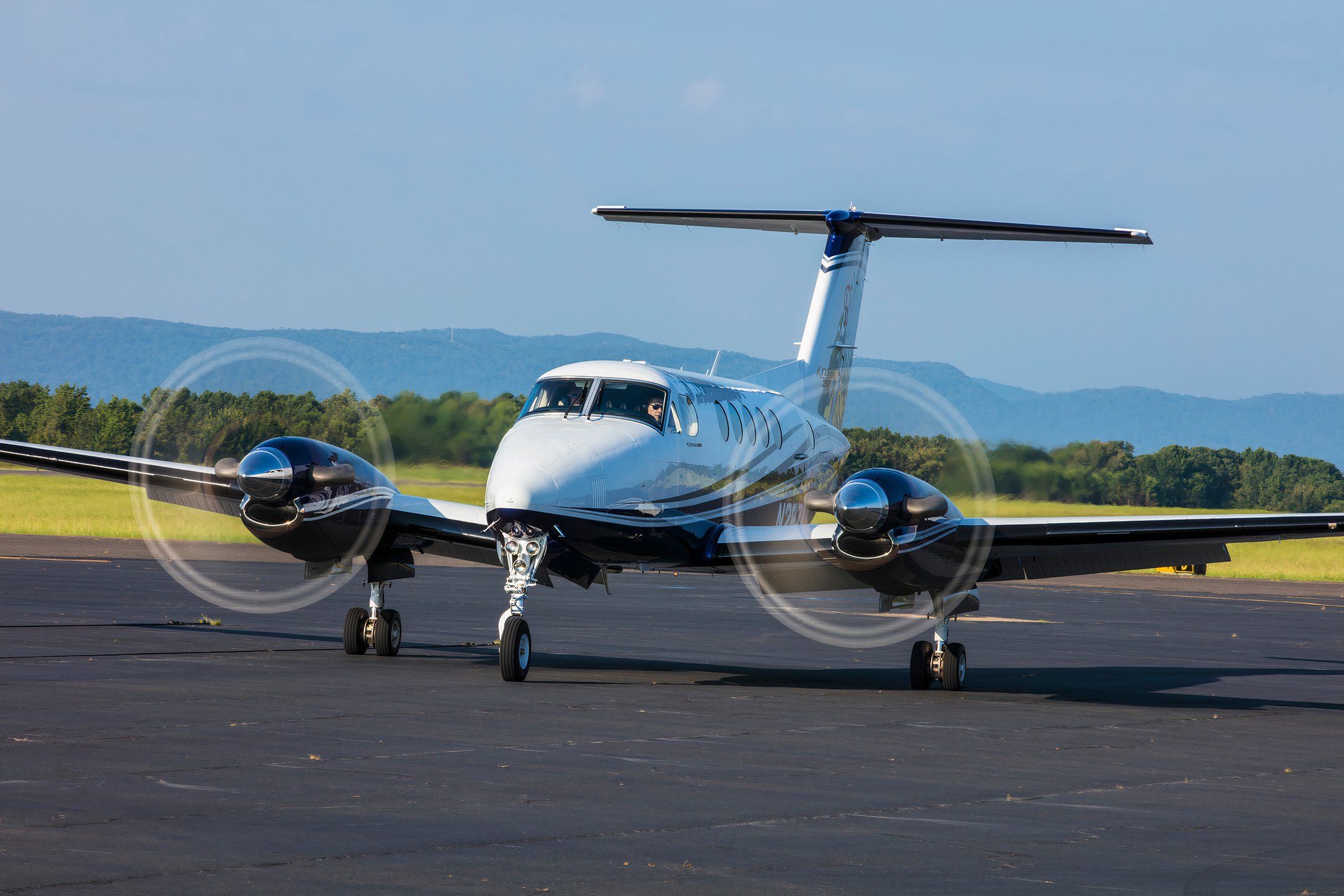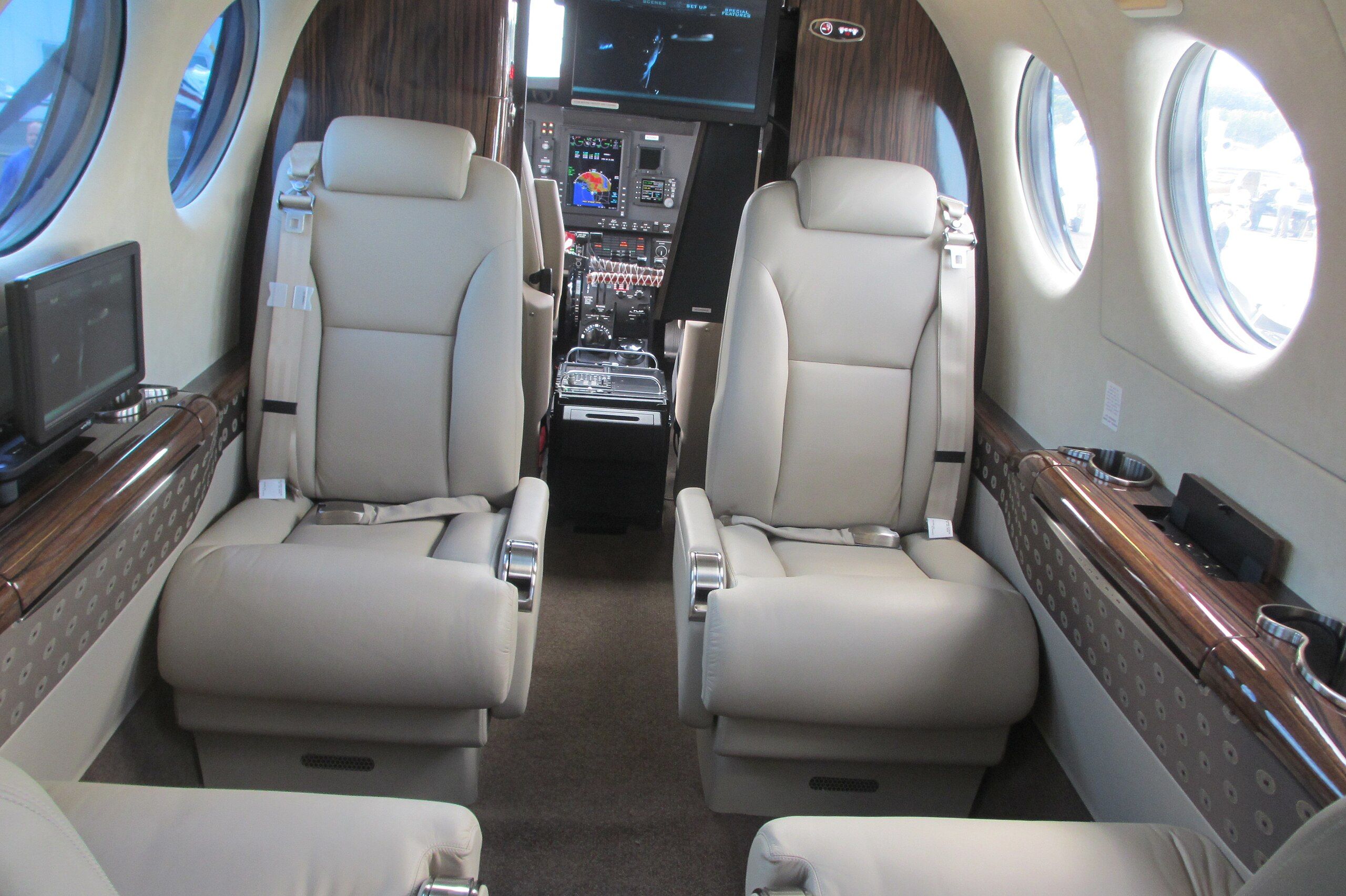Summary
- Beechcraft King Air 300 is a twin-turboprop aircraft with a capacity of up to 11 passengers, featuring Pratt and Whitney PT6A-60A engines for improved performance.
- A lightweight version (300LW) was introduced due to regulatory restrictions in some countries, with a maximum takeoff weight of 12,500 lbs.
- The King Air 300 has been used by the FAA and other countries for navaid calibration, and the 350i model introduced in 2008 features improved passenger comfort and cabin upgrades.
The Beechcraft King Air 300 is part of the twin-turboprop aircraft designed and developed by Beechcraft. Initially marketed at the Super King Air, the Model 300 is a slightly stretched version of the Model 200, with a capacity of up to 11 passengers.
The Model 300 prototype flew in September 1983, and deliveries of the first production aircraft began the following year. With the improvements on the Model 200, the Model 300’s Maximum Takeoff Weight was 14,000 lbs (6,400 kg). According to GlobalAir.com,
“The King Air 300 was developed by straightening the edges and redesigning the cowling of the Model 200 airframe. Pratt and Whitney PT6A-60A engines were added for improved performance and power. As a result of this engine upgrade, maximum takeoff weight increased to 14,000 pounds, range extended to 1,500 miles, and maximum cruise speed increased to 320 knots.”
Beechcraft also introduced a lightweight version (300LW) because several countries could not get the type certified with an MTOW of more than 12,500 lbs (5,700 kg). The LW version was used in a variety of utility applications, including air ambulance, navigation aids, and light cargo operations.
Beechcraft Model 300
| Model | Model 300 | Model 300LW |
|---|---|---|
| MTOW | 14,000 lbs (6,400 kg) | 12,500 lbs (5,700 kg) |
| Number built | 212 | 35 |
The Beechcraft Model 300 is an improved version of the Model 200. With the popularity of the latter, the manufacturer began work on its successor aircraft in the early 1980s. The airframe was slightly reinforced to allow for more powerful Pratt & Whitney PT6A-60A engines, each generating up to 1,050 shaft horsepower (780 kW) of takeoff power.
Photo: BlueBarronPhoto | Shutterstock
The reshaped engine intakes drove a change in the design of the cowlings, known as pilot cowlings. The engine’s greater thrust performance was also associated with the engine cowlings, making it highly capable at all phases of flight. Before the new model was prototyped, the manufacturer developed the updated systems in the modified Model 200.
Beechcraft designed the lightweight version at the same time as the original Model 300 because regulatory authorities of some countries did not allow the certification of the type with MTOW of greater than 12,500 lbs. A total of 35 examples of the lowered MTOW design (300LW) were built for the European market.
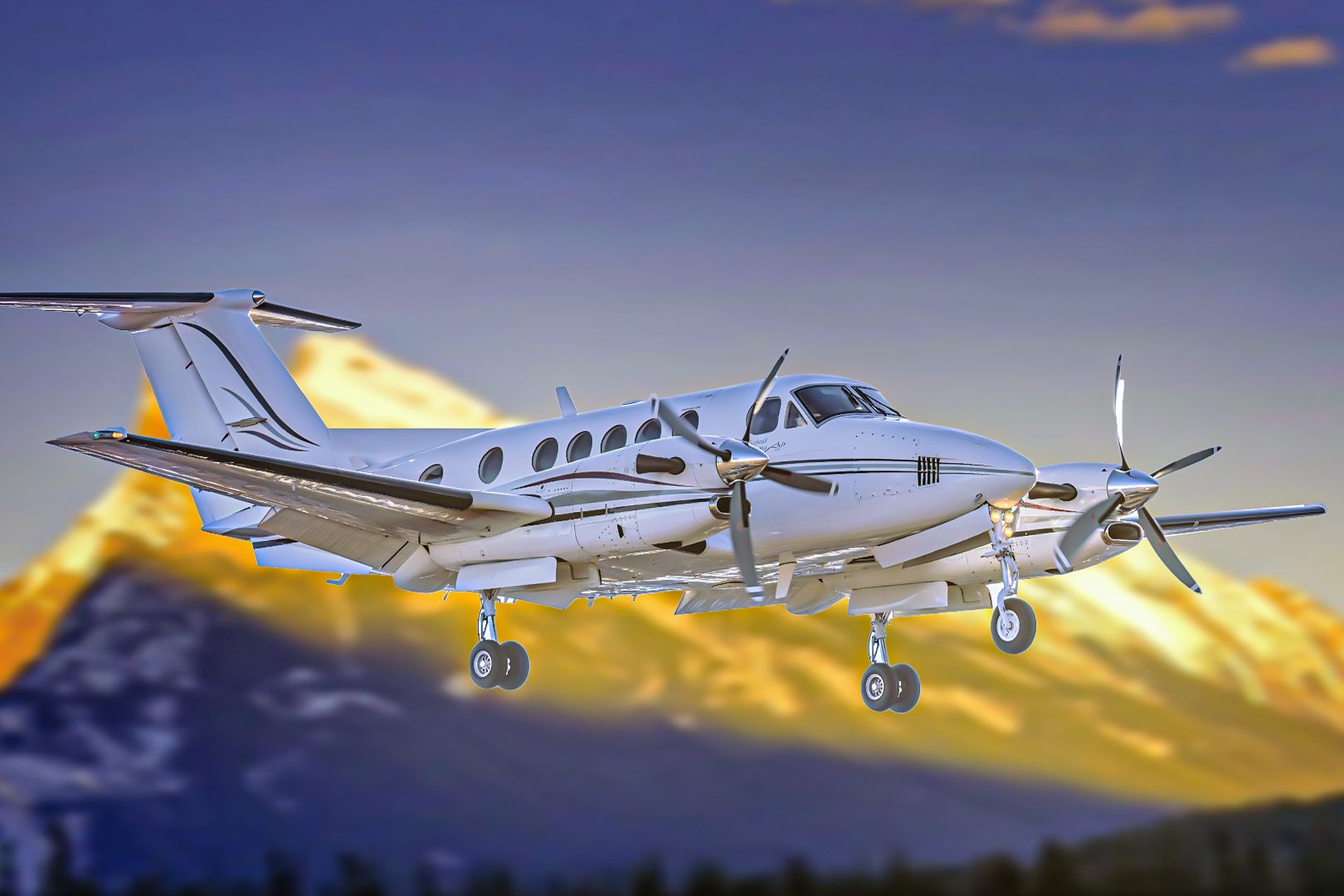
Related
5 Little-Known Facts About The Beechcraft King Air 300 Series
The King Air 300 was originally designated as the Super King Air.
Federal Aviation Administration (FAA) Navaids
King Air 300 performance parameters
- Max speed: 320 knots
- Normal cruise: 312 knots
- Economy cruise: 231 knots
- Rate of climb: 2844 feet/minute
- Climb rate (one engine inoperable): 867 feet/minute
- Operational range: 1,480 NM
- Maximum range: 1,570 NM
- Service ceiling: 35,000 ft
A total of 19 examples of the specialized Model 300 aircraft were developed for the FAA. The agency aimed to use the King Air fleet to check the extensive network of navaids in the United States. Navaids, short for navigational aids, are any device used to guide pilots through the airspace. Regardless of the type of navaid, its primary purpose is to provide guidance, location, and direction.
Photo: Textron Aviation
According to Paramount Business Jets,
“Very-high frequency omnidirectional ranges (VORs) are the main NAVAID that support the United States airway system. They are located at various airports and consist of 3 main types: high, low, and terminal. Depending on your altitude and distance from the VOR, it will determine the best one for use. They provide a bearing to and from the NAVAID as well as magnetic direction.”
The first two FAA aircraft were conversions of the original Model 300, especially upgraded for the agency’s mission. The remaining 17 aircraft were purpose-built for the FAA, allowing them the flexibility required for navaid flights.
Several other countries utilized the King Air 300 aircraft for navaid purposes, including Australia, Germany, Hong Kong, Norway, Sweden, and Taiwan. One of the King Air variants, the B200C, used for the navaid calibration, became the first aircraft to land at Hong Kong’s Chek Lap Kok Airport (HKG).
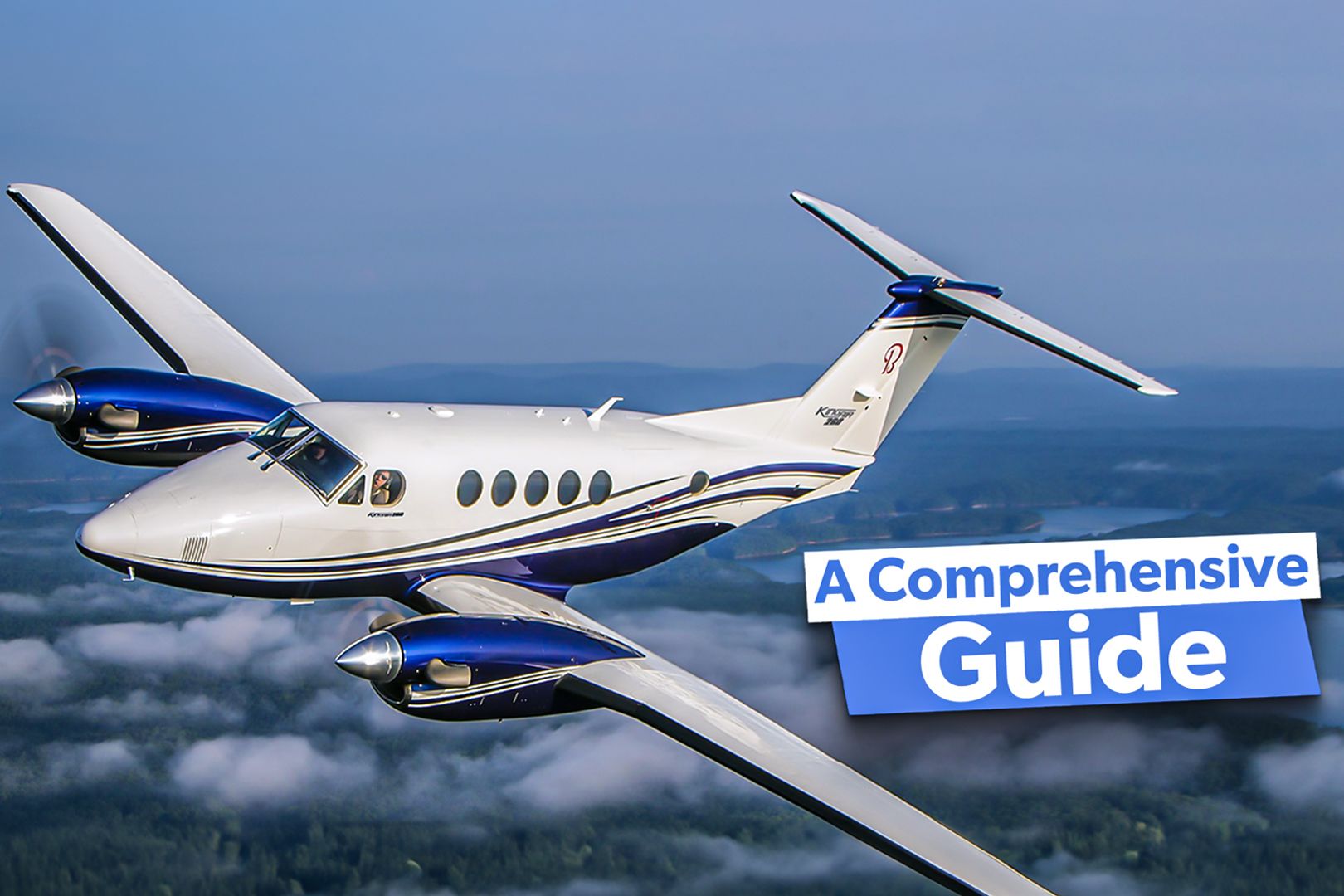
Related
A Comprehensive Guide To The Costs Of Flying A Beechcraft King Air 260
Not as expensive as you think?
The King Air 350i
In October 2008, Beechcraft brought a big update to the family of aircraft with the introduction of the King Air 350i. The overall passenger comfort of the aircraft was improved, with lower noise levels and a spacious and comfortable interior.
Some cabin upgrades included passenger seat controls for LED lights, darkening windows, high-definition monitors, and media control from the seats. The new cabin and seating include folding tables for each passenger, Universal Serial Bus (USB) ports, and AC electrical receptacles.
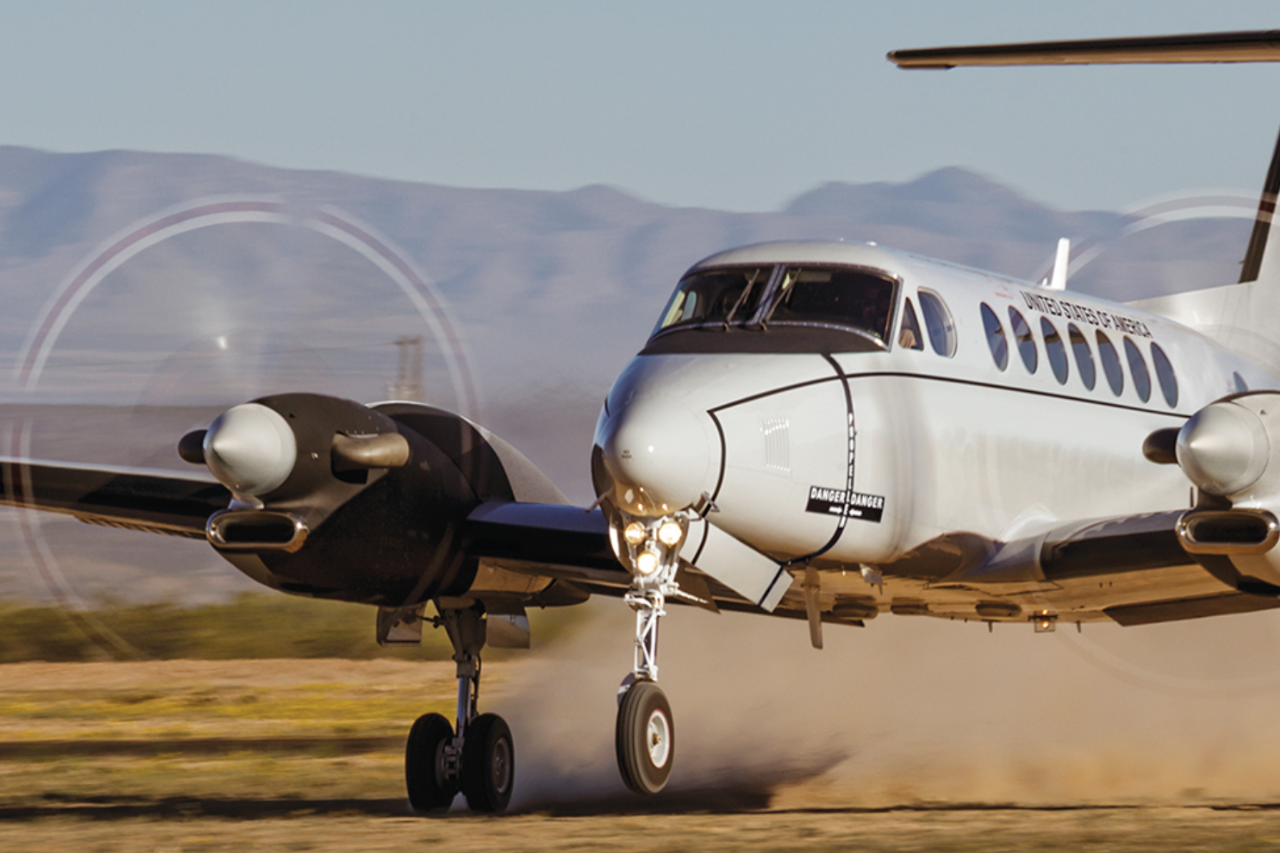
Related
A Look At The Beechcraft King Air & All The Cool Things It Does
From corporate jet to air ambulance, this turboprop is the king of multi-mission performance
What are your thoughts on the lightweight version of the Beechcraft King Air Model 300? Share your views in the comments section.

